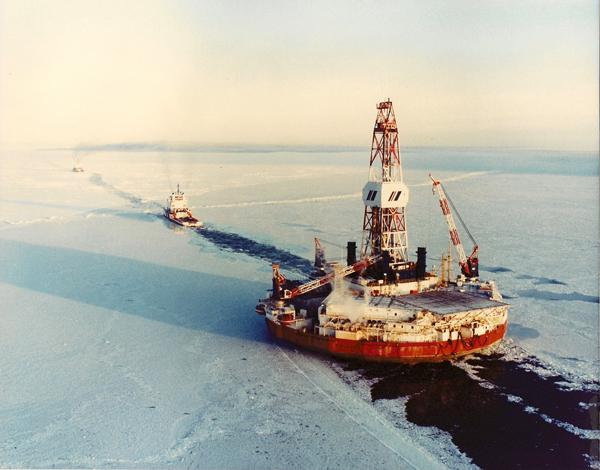
U.S. ARCTIC DRILLING

The Interior Department on Friday proposed the first-ever federal regulations for oil and natural-gas drilling in the Arctic Ocean requiring companies to prepare extensive contingency plans that could swiftly respond to and contain an oil spill in the region's frigid, isolated waters.
No energy company currently is drilling in the U.S. portion of the Arctic Ocean. Royal Dutch Shell has plans to begin drilling this summer in the Chukchi and Beaufort seas, in what is currently the company's largest, most high-profile and expensive exploration project. ConocoPhillips and Statoil also own leases in the Arctic, though neither company has immediate plans to drill there.
The rules would put in place most of what Shell has already committed to do this summer, including having available an additional rig that could drill a relief well in the case the company loses control of a well. The regulation technically won't apply to Shell's plans to drill this summer, since it won't be final by then and would only apply to future drilling operations.
Many parts of the proposed rule stem from an agreement between Shell and the Interior Department following missteps the London-based company made in 2012. That summer, Shell's first, and so far only, drilling attempt since it began its Arctic pursuit in 2007 failed amid bad weather and mechanical failures.
The region's cold climate provides a brief window—generally from July to October—when companies can drill safely given the icy conditions the rest of the year.
In addition to requiring another rig on standby nearby, the regulations would require companies to construct and test a containment dome in case of a spill and submit region-specific spill response plans. The American Petroleum Institute criticized the need for an additional rig as "unnecessarily burdensome."
Such requirements are also required for drilling in the Gulf of Mexico, but resources are often pooled among the many operators in that region. Given the Arctic's remoteness and absence of current drilling activity, the cost of the regulation could be higher for companies seeking to drill there.
"For a single operator, that poses a heavier financial challenge to provide that capability," said Brian Salerno, who directs the Interior Department's Bureau of Safety and Environmental Enforcement.
The proposed regulations, which must go through a 60-day public comment period before becoming final, would apply only to exploratory wells. An Interior Department spokeswoman would not say when the regulations would become final. Mr. Salerno said the department would eventually pursue a rule governing production, though that isn't expected to occur for several years.
According to Interior Department data released in 2011, the federal waters in the Beaufort and Chukchi seas hold 22 billion barrels of technically recoverable oil and 93 trillion cubic feet of technically recoverable natural gas. The U.S. is currently producing about 9 million barrels of oil a day and about 90 billion cubic feet of gas a day.
Shell plans to invest $1 billion in its Arctic project this year, adding to the $6 billion the company has already spent on exploration drilling offshore Alaska in the past eight years. The issuance of drilling rules was seen as a pivotal step in ensuring the administration would support Shell's efforts. But other factors remain, including ongoing litigation and additional permitting.
"Of paramount concern in all of our operations is safety and environmental protection," Shell spokesman Curtis Smith said. "We support regulations that further these imperatives in the Arctic, provided they are clear, consistent and well-reasoned."
An environmental group involved in arctic conservation issues generally supported the move. "This is a first-ever regulation for the Arctic, and I think this is a big step toward safety and prevention for drilling in the Arctic," said Marilyn Heiman, who directs the U.S. Arctic Project at the Pew Charitable Trusts.
The Arctic regulations are part of a broader energy and environmental strategy the Obama administration is pursuing in the Arctic Ocean and onshore Alaska that is facing criticism from the state's Republican delegation, including Senate Energy and Natural Resources Chairman Lisa Murkowski .
In the past couple of months, President Barack Obama has moved to block oil and natural-gas drilling in three different places in and around Alaska, including 13 million acres of the Arctic National Wildlife Refuge, parts of the Chukchi and Beaufort seas, and 32.5 million acres of Bristol Bay in southwestern Alaska.
wsj.com



